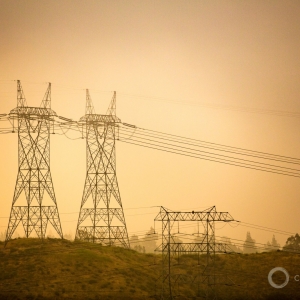This week’s episode of What’s Up With Water covers drought in China, stalled Colorado River negotiations, and lawsuits over flooding in Eastern Kentucky.
Transcript
Welcome to What’s Up with Water – your “need to know” news of the world’s water from Circle of Blue. I’m Eileen Wray-McCann.
China issued its first national drought alert of the year, according to Reuters News. Dry conditions have intensified across the country’s southern region, affecting energy supplies, river transport, and food production. It is one of China’s worst droughts in the last half century. State media say that 66 rivers in the southwestern region of Chongqing have dried up. The region has borne the worst in the recent extreme weather, with temperatures regularly over 100 degrees Fahrenheit. Firefighters have battled forest fires across Chongqing, and state media reported increases in heatstroke. As Chinese farmers struggle to protect grain harvests, government officials say they will encourage rain with cloud seeding efforts and spray crops with a “water retaining agent.” Factories in Sichuan province have also suffered. Many, including a Volkswagen facility, have closed because of power shortages. Hydropower production in the province is down by half, while demand for electricity is soaring due to more air conditioning. Ninety-four million people live in Sichuan and businesses have flocked there because of its cheap hydropower. To make up for the power shortfall, coal plants are being pressed into service, releasing more of the greenhouse gasses that are causing the record-setting heat wave.
In the United States, negotiations over reductions in Colorado River water use have stalled, with at least one defection from a water conservation pact. Last week, the Gila River Indian Community said that the central Arizona tribe would no longer contribute part of its Colorado River allocation to a conservation program for the troubled Lake Mead. The Arizona Republic reports that tribe leaders made the decision after seeing little collective progress in negotiations to reduce water withdrawals from the Colorado River. Instead of storing conserved water in the shrinking Lake Mead, the Gila River Indian Community will hold its supplies underground in Arizona, where it can access them. This will make it harder for the lower basin states of Arizona, California, and Nevada to achieve an ambitious conservation goal – saving 500,000 acre-feet of water in Lake Mead in the next year.
Elsewhere in the U.S., communities continue their recovery efforts after devastating floods. In Eastern Kentucky at least 39 people died in downpours that raged at the end of July. Now, residents of one Appalachian mountain community are turning to the courts for resolution. Fifty-nine residents of Breathitt County joined a lawsuit against two coal mining companies, according to the Louisville Courier Journal. The lawsuit alleges that the mining practices of Blackhawk Mining and Pine Branch Mining made the floods more severe. The companies strip the topsoil to remove coal. They also store waste in ponds that the lawsuit alleges were improperly maintained. The residents are seeking compensation for property damages, relocation expenses, lost water supply, and anguish from the disaster. The attorney for the residents compared the ordeal to another flooding catastrophe, saying “This was our Katrina.”
And that’s “What’s Up With Water” from Circle of Blue, where water speaks. More water news and analysis await you at circleofblue.org. This is Eileen Wray-McCann – thanks for being here.
Eileen Wray-McCann is a writer, director and narrator who co-founded Circle of Blue. During her 13 years at Interlochen Public Radio, a National Public Radio affiliate in Northern Michigan, Eileen produced and hosted regional and national programming. She’s won Telly Awards for her scriptwriting and documentary work, and her work with Circle of Blue follows many years of independent multimedia journalistic projects and a life-long love of the Great Lakes. She holds a BA and MA radio and television from the University of Detroit. Eileen is currently moonlighting as an audio archivist and enjoys traveling through time via sound.






